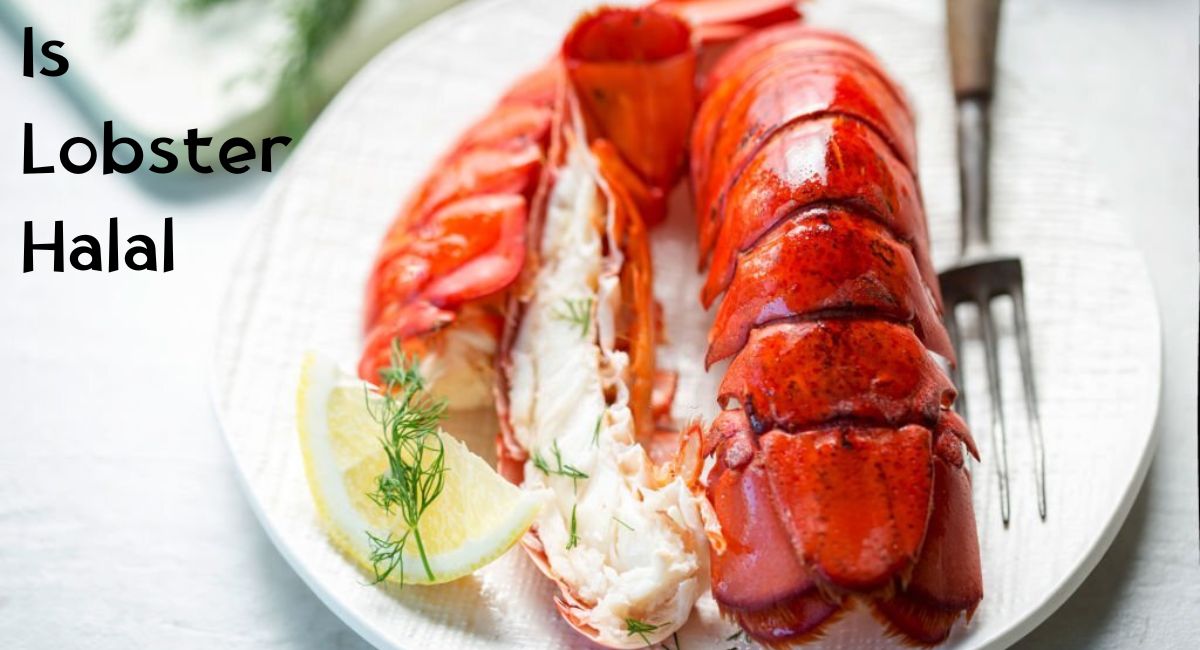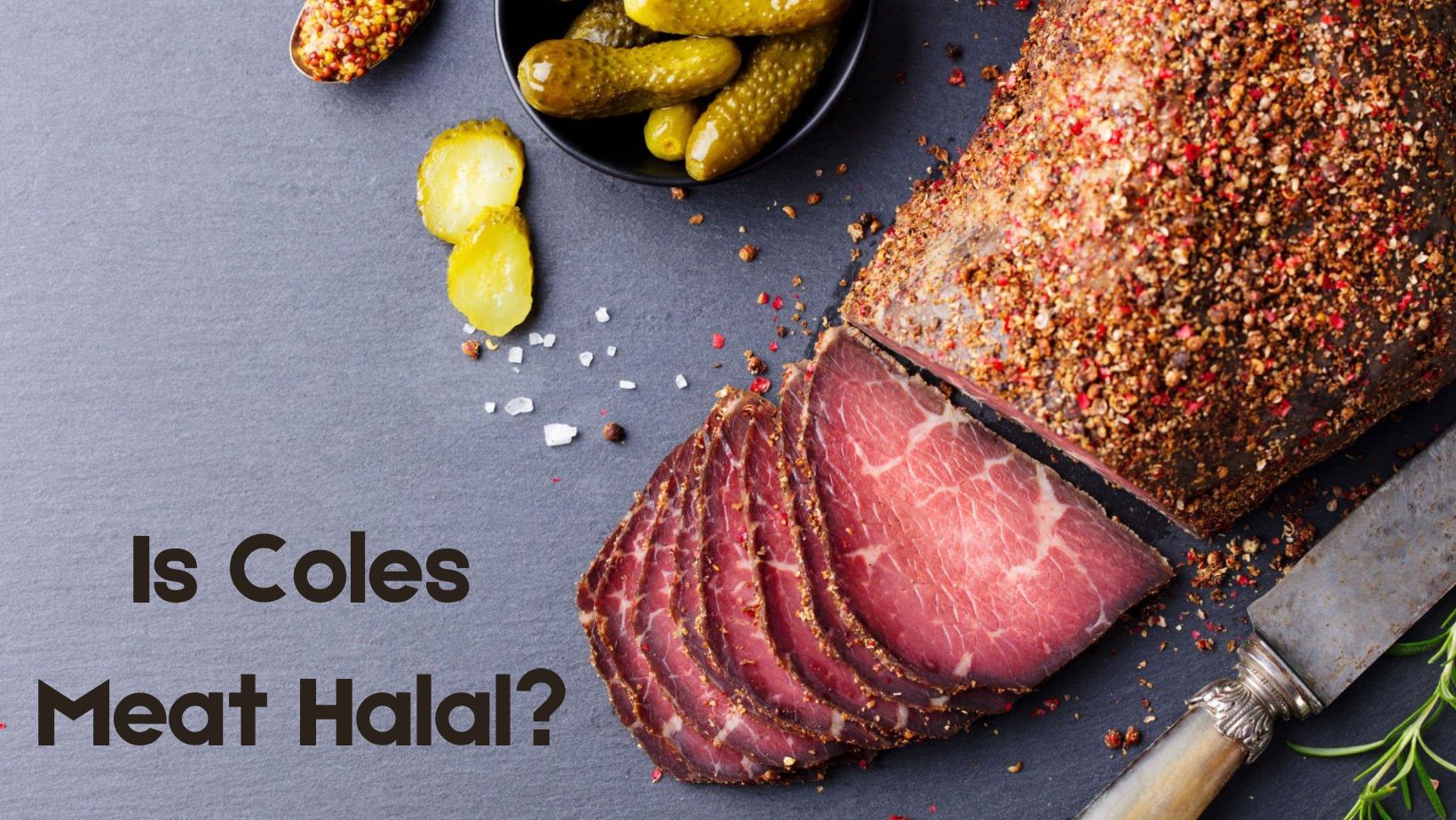In the world of culinary delights, few seafood delicacies rival the allure of the lobster. With its succulent meat and unmistakable flavor, this crustacean has captured the palates of many food enthusiasts worldwide. However, for those adhering to Islamic dietary guidelines, the question arises: is lobster halal?
In this article, we embark on a quest to unravel the mystery surrounding the halal status of lobster. We delve into the scholarly opinions, religious texts, and cultural practices to shed light on this intriguing topic. By exploring the various perspectives and considerations, we aim to provide a nuanced understanding of whether or not lobster can be deemed halal according to Islamic dietary laws.
What is a Lobster
A lobster is a type of crustacean found in the ocean. It belongs to the family Nephropidae and is scientifically known as Homarus americanus. Lobsters are known for their hard exoskeleton, long antennae, and powerful claws. They have a segmented body and are part of the larger group of decapod crustaceans, which includes crabs, shrimps, and crayfish.
In the early days, lobsters were not considered a luxury food item. They were commonly consumed by the poor and were even fed to prisoners and slaves. Lobsters were often referred to as the “poor man’s protein” and had a reputation as the “cockroaches of the sea”. In fact, indentured servants in the 1700s revolted against being fed lobster meat more than three times a week.
However, over time, the perception of lobsters changed, and they evolved into a sought-after delicacy. By the mid-19th century, lobsters gained popularity as a luxury food item. Improved transportation and preservation methods allowed lobsters to be shipped and enjoyed in different parts of the world. Today, lobster is considered a gourmet seafood dish and is often associated with special occasions and fine dining.
Is Lobster a Fish
No, a lobster is not a fish. They are part of the order Decapoda, which refers to animals with ten legs, and the suborder Pleocyemata.
Fish, on the other hand, belong to the phylum Chordata and the class Actinopterygii or Chondrichthyes, depending on the type of fish. Fish have a vertebral column and are characterized by gills, fins, and scales.
Lobsters and fish are distinct groups of animals with different anatomical and taxonomic characteristics. While both lobsters and fish are commonly found in marine environments, they represent different branches of the animal kingdom.
Types of Lobsters

There are several types of lobsters that are edible. Here are some of the commonly consumed varieties:
- American Lobster (Homarus americanus): This is the most well-known type of lobster and is commonly found in North America. It is characterized by its large claws and sweet, succulent meat.
- European Lobster (Homarus gammarus): Also known as the common lobster, it is found in the eastern Atlantic Ocean, Mediterranean Sea, and parts of the Black Sea. It has a similar taste and texture to the American lobster.
- Spiny Lobster (Panulirus spp.): Spiny lobsters, also known as rock lobsters, are a group of lobsters without large claws. They are found in warm oceans and are commonly served grilled or steamed. They have a different flavor profile compared to clawed lobsters.
- Slipper Lobster (Family: Scyllaridae): Slipper lobsters are not true lobsters but are related to spiny lobsters. They have enlarged antennae and are found in warm oceans and seas. They are known for their sweet and delicate meat.
- California Spiny Lobster (Panulirus interruptus): This species is native to the Pacific coast of North America and is highly valued for its meat. It is commonly used in various seafood dishes, including lobster rolls.
- Caribbean Spiny Lobster (Panulirus argus): Found in the Caribbean Sea and western Atlantic Ocean, this spiny lobster is a popular delicacy in the region. It has a distinct flavor and is often served grilled or broiled.
- Australian Lobsters (Various species): Australia is home to several edible lobster species, including the Southern Rock Lobster (Jasus edwardsii) and the Western Rock Lobster (Panulirus cygnus). They are highly valued for their sweet and tender meat.
- Maine Lobster (Homarus americanus): Maine lobsters are a subspecies of the American lobster and are renowned for their quality and flavor. They are harvested off the coast of Maine, USA, and are commonly served boiled or steamed.
These are just a few examples of the edible types of lobsters. The taste, texture, and availability of lobsters may vary depending on the species and their respective habitats.
Is Lobster Halal
According to Islamic teachings and various sources, there are differing opinions among scholars regarding the permissibility of consuming lobster in Islam. It’s worth noting that personal beliefs and cultural practices may influence individual interpretations and adherence to specific rulings.
The majority of scholars, including the Maliki, Shafi’i, and Hanbali schools of thought, consider lobsters and other harmless shellfish, such as crabs, prawns, oysters, and shrimps, to be halal (permissible).
They argue that all types of fish in the sea, including lobsters, are permissible to eat based on the general permission given in the Quran (Al-Ma’idah 5:96).
“Lawful to you is game from the sea and its food as provision for you and the travelers”
Quran (Al-Ma’idah 5:96)
This verse addresses the permissibility of consuming seafood from the sea, allowing it as a source of lawful food for believers and travelers.
There’s also a hadith that mentions that fish and locusts are permitted to consume, while other types of animals found in water are not specified. This guidance is derived from the following hadith:
The Prophet Muhammad (peace be upon him) said: “Two types of dead animals and two types of blood have been made lawful for us. As for the two dead animals, they are fish and locusts, and as for the two types of blood, they are the liver and spleen.”
[Sunan Ibn Majah 3314]
However, the Hanafi school of thought considers lobsters and other crustaceans to be makruh (discouraged), meaning they are not recommended but not strictly forbidden. The ruling is based on the understanding that the permission for “the produce of the sea” mentioned in the Quran (5:96) is limited to what was traditionally considered wholesome by the Arabs, namely fish alone.
While there are differing opinions, the general consensus is that lobsters are considered halal by the majority of scholars. However, it is recommended to follow the guidelines provided by your local scholars or consult with an Islamic authority for a more specific ruling that aligns with your own beliefs and practices.
Are Lobsters Healthy to Eat

Lobsters are a type of shellfish known for their delicate and flavorful meat. The question of whether lobsters are healthy to eat is often asked in relation to their nutritional value and potential health benefits.
Lobster Nutrition and Health Benefits
Lobster meat is low in calories and fat while being rich in essential nutrients. It is a good source of high-quality protein, providing all the essential amino acids needed by the body. Lobster also contains beneficial vitamins and minerals. Here are some key nutritional aspects and health benefits associated with lobster consumption:
- Nutritional Profile: A 1-cup (approximately 145 grams) serving of cooked lobster typically provides around 128-142 calories, 1.2-1.3 grams of fat, 0 grams of carbohydrates, and 27-29.73 grams of protein. It is also a good source of minerals like copper, selenium, calcium, magnesium, and zinc, as well as vitamins such as vitamin B12 and vitamin E.
- Protein: Lobster is a great source of high-quality protein, which is essential for various functions in the body, including muscle development, repair, and immune function.
- Omega-3 Fatty Acids: Lobster contains small amounts of omega-3 fatty acids, particularly EPA (eicosapentaenoic acid) and DHA (docosahexaenoic acid). These essential fatty acids have been associated with various health benefits, including heart health and brain function.
- Minerals and Vitamins: Lobster is a good source of minerals such as copper, which plays a role in energy production and iron absorption, and selenium, which acts as an antioxidant and supports immune function. It also provides vitamins like vitamin B12, important for nerve function and red blood cell production, and vitamin E, an antioxidant that helps protect cells from damage.
- Low in Saturated Fat: Despite its reputation, lobster is low in saturated fat compared to other meats. It can be enjoyed as part of a balanced diet without significantly impacting cholesterol levels.
Downsides and Considerations
While lobster can be a nutritious addition to a well-rounded diet, there are a few factors to consider:
- Cholesterol Content: Lobster does contain cholesterol, but research suggests that dietary cholesterol has a minimal impact on blood cholesterol levels for most individuals. However, people with specific medical conditions or dietary restrictions should consult with a healthcare professional regarding their individual needs and limitations.
- Preparation Methods: The nutritional value of lobster can be influenced by how it is prepared. Lobster is often served with butter or other high-fat sauces, which can add calories and saturated fat. Opting for healthier cooking methods such as steaming or grilling can help retain the nutritional benefits without adding excess fats or calories.
- Allergies and Sensitivities: Lobster, like other shellfish, is a common allergen, and some individuals may experience allergic reactions. It is essential to be aware of any allergies or sensitivities before consuming lobster or any other shellfish.
- Sustainability and Sourcing: As with any seafood, it is important to consider the sustainability and responsible sourcing practices when consuming lobster. Choosing sustainably sourced and well-managed seafood options helps support marine ecosystems and ensures long-term availability.
How to Cook Lobster

Cooking lobster can be done in various ways, depending on personal preference and the desired outcome. Here is a comprehensive guide on how to cook lobster:
- Buying Lobster: When purchasing lobster, you have the option of buying live lobsters or frozen lobster tails. Live lobsters should appear healthy, active, and have a strong odor. Frozen lobster tails are a good alternative if live lobsters are not readily available.
- Handling Live Lobster: If you’re working with live lobsters, it is essential to handle them carefully. Keep the rubber bands on their claws to prevent injuries. Some lobstermen remove the bands before cooking, but it is a matter of personal preference.
- Boiling Lobster: Boiling is a popular method for cooking lobster. Here’s a step-by-step guide for boiling lobsters:
- Fill a large pot with salted water and bring it to a boil.
- Gently place the live lobsters into the boiling water, headfirst.
- Cook the lobsters for about 8-12 minutes, depending on their size. The shells will turn bright red when cooked.
- Grilling or Broiling Lobster Tails: If you prefer to cook lobster tails, grilling or broiling can result in delicious flavors. Here’s a general guide for grilling or broiling lobster tails:
- Prepare the lobster tails by splitting them in half lengthwise and loosening the meat from the shell.
- In a separate bowl, combine melted butter, minced garlic, salt, and pepper.
- Brush the lobster tails with the butter mixture and place them on a preheated grill or under a broiler.
- Cook the lobster tails for about 5-8 minutes, until the meat is opaque and slightly charred.
- Steaming Lobster: Steaming is another method for cooking lobster, particularly popular for whole lobsters. Here’s a basic guide for steaming lobsters:
- Fill a large pot with a few inches of water and bring it to a boil.
- Place a steamer basket or rack inside the pot.
- Put the live lobsters in the steamer basket or on the rack, cover the pot, and steam for about 8-12 minutes until the shells turn bright red.
- Additional Cooking Methods: Lobster can also be cooked by methods like baking, sautéing, or even serving it raw as carpaccio. These methods may require different techniques and recipes to achieve the desired results.
Remember to follow any specific recipes or instructions you may have and adjust cooking times based on the size and type of lobster you’re working with. Enjoy your deliciously cooked lobster!
Culinary Uses of Lobster
Lobster is a versatile ingredient that can be used in various culinary preparations. Below are some culinary uses of lobster. These are just a few examples of the culinary uses of lobster. Its versatility allows for a wide range of preparations, from classic dishes to innovative creations.
- Lobster Newburg: This rich and creamy dish features boiled lobster pieces in a luscious sauce, traditionally served over rice, toast points, or puff pastry shells.
- Lobster Salad: Lobster salad is a refreshing and citrusy dish that works well on a bed of lettuce, in a lobster roll, or served with soft buns. It can be garnished with chopped tomato, cucumber, and avocado for added flavor.
- Grilled Lobster Tail: Grilled lobster tail is a popular preparation that highlights the natural flavors of lobster. Whether using fresh or frozen tails, grilling them is a simple and delicious way to enjoy lobster.
- Lobster Rolls: Lobster rolls are iconic and can be prepared in different styles. The Maine-style lobster roll features lobster salad dressed with mayo, while the Connecticut-style roll is dressed with melted butter and chives, allowing the natural flavor of the lobster to shine.
- Lobster Bisque: Lobster bisque is a creamy and flavorful soup made from lobster bodies (heads) and other ingredients. It is a classic dish that showcases the rich taste of lobster.
- Lobster Mac and Cheese: Lobster adds a luxurious twist to traditional mac and cheese recipes. The tender meat complements the creamy cheese sauce, creating a decadent and indulgent dish.
- Lobster Thermidor: Lobster Thermidor is a classic French dish that combines cooked lobster meat with a creamy mixture of egg yolks, brandy, and other ingredients. The mixture is then stuffed back into the lobster shells, topped with cheese, and baked until golden and bubbling.
- Lobster Stir-Fry: Lobster can be incorporated into stir-fry dishes, adding a touch of elegance and flavor to the dish. Combine lobster with vegetables, sauces, and spices for a delicious and quick meal.
- Lobster Tacos or Quesadillas: Lobster meat can be used as a filling for tacos or quesadillas, providing a unique twist to traditional Mexican cuisine. The tender and succulent lobster pairs well with various toppings and spices.
- Lobster Sushi or Sashimi: Lobster can be enjoyed raw as sushi or sashimi. Its sweet and delicate flavor makes it an excellent addition to sushi rolls or served as thin slices of sashimi, paired with soy sauce, wasabi, and pickled ginger.
What Can You Eat in a Lobster
The edible parts of a lobster include:
- Tail: The lobster tail is considered the star attraction and is highly prized for its beefy texture and succulent meat. It is often the main focus of a lobster meal.
- Claws: Lobster claws are costars and contain sweet and silky meat. They can be cracked open using a nutcracker and the meat can be extracted with a cocktail fork.
- Legs: The legs of a lobster also contain meat that can be extracted. While the meat in the legs is smaller compared to the tail and claws, it is still enjoyable to eat.
- Ribs: The ribs of a lobster refer to the small, delicate pieces of meat found inside the body cavity. These can be eaten and enjoyed.
- Roe: The roe, also known as lobster eggs or coral, is the red or orange mass found in female lobsters. It is considered a delicacy by some and can be eaten.
- Knuckles: The knuckles of a lobster refer to the joints where the legs meet the body. They contain small amounts of meat that can be extracted and enjoyed.
It’s worth noting that some people also enjoy eating the tomalley, which is the greenish, paste-like substance found in the body cavity of a lobster. The tomalley is the liver and pancreas of the lobster and is considered a delicacy by lobster lovers. However, it is an acquired taste and not everyone enjoys it.






